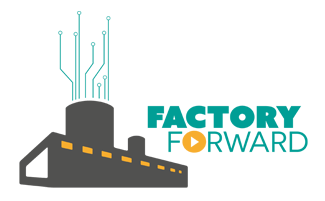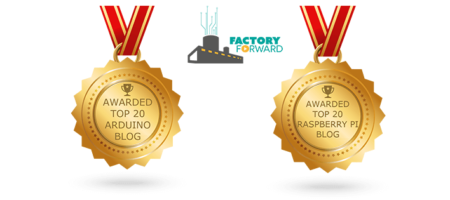How to install Arduino IDE on your Computer
IDE Stands for Integrated Development Environment. Arduino has its own IDE for the major operating systems Windows, Mac and Linux. You can download and install it on your computer and program your arduino. To install the IDE on your local computer visit the Arduino Official Website.
How to install IDE on your Computer?
Step1: You need to visit the Arduino Official Website (https://www.arduino.cc/en/Main/Software) and choose your operating system. In windows, you will get the .exe file as well as Portable zip file(Non-Admin Install). For complete installation, use the .exe method.

Step 2: Once the file gets downloaded, Double-click the file and follow the instruction provided in it.
Step 3: Now the IDE got installed. Just double-click on it and it will open.

User Interface of Arduino IDE:
An IDE looks like the following image given below. It consists of different interfaces for the users to use it with Arduino. Each block IDE is explained below.

- Menu Items
- Icons
- Message Window
- Board Type
MENU ITEMS:
Menu items are mostly similar to all window applications. The detailed explanation is given below.
File
- New
Creates a new instance of the editor, with the bare minimum structure of a sketch already in place.
- Open
Allows loading a sketch file browsing through the computer drives and folders.
- Open Recent
Provides a short list of the most recent sketches, ready to be opened.
- Sketchbook
Shows the current sketches within the sketchbook folder structure; clicking on any name opens the corresponding sketch in a new editor instance.
- Examples
Any example provided by the Arduino Software (IDE) or library shows up in this menu item. All the examples are structured in a tree that allows easy access by topic or library.
- Close
Closes the instance of the Arduino Software from which it is clicked.
- Save
Saves the sketch with the current name. If the file hasn’t been named before, a name will be provided in a “Save as..” window.
- Save as…
Allows to save the current sketch with a different name.
- Page Setup
It shows the Page Setup window for printing.
- Print
Sends the current sketch to the printer according to the settings defined in Page Setup.
- Preferences
Opens the Preferences window where some settings of the IDE may be customized, as the language of the IDE interface.
- Quit
Closes all IDE windows. The same sketches open when Quit was chosen will be automatically reopened the next time you start the IDE.
Edit
- Undo/Redo
Goes back of one or more steps you did while editing; when you go back, you may go forward with Redo.
- Cut
Removes the selected text from the editor and places it into the clipboard.
- Copy
Duplicates the selected text in the editor and places it into the clipboard.
- Copy for Forum
Copies the code of your sketch to the clipboard in a form suitable for posting to the forum, complete with syntax coloring.
- Copy as HTML
Copies the code of your sketch to the clipboard as HTML, suitable for embedding in web pages.
- Paste
Puts the contents of the clipboard at the cursor position, in the editor.
- Select All
Selects and highlights the whole content of the editor.
- Comment/Uncomment
Puts or removes the // comment marker at the beginning of each selected line.
- Increase/Decrease Indent
Adds or subtracts a space at the beginning of each selected line, moving the text one space on the right or eliminating a space at the beginning.
- Find
Opens the Find and Replace window where you can specify text to search inside the current sketch according to several options.
- Find Next
Highlights the next occurrence – if any – of the string specified as the search item in the Find window, relative to the cursor position.
- Find Previous
Highlights the previous occurrence – if any – of the string specified as the search item in the Find window relative to the cursor position.
Sketch
- Verify/Compile
Checks your sketch for errors compiling it; it will report memory usage for code and variables in the console area.
- Upload
Compiles and loads the binary file onto the configured board through the configured Port.
- Upload Using Programmer
This will overwrite the bootloader on the board; you will need to use Tools > Burn Bootloader to restore it and be able to Upload to USB serial port again. However, it allows you to use the full capacity of the Flash memory for your sketch. Please note that this command will NOT burn the fuses. To do so a Tools -> Burn Bootloader command must be executed.
- Export Compiled Binary
Saves a .hex file that may be kept as archive or sent to the board using other tools.
- Show Sketch Folder
Opens the current sketch folder.
- Include Library
Adds a library to your sketch by inserting #include statements at the start of your code. For more details, see libraries below. Additionally, from this menu item you can access the Library Manager and import new libraries from .zip files.
- Add File…
Adds a source file to the sketch (it will be copied from its current location). The new file appears in a new tab in the sketch window. Files can be removed from the sketch using the tab menu accessible clicking on the small triangle icon below the serial monitor one on the right side o the toolbar.
Tools
- AutoFormat
This formats your code nicely: i.e. indents it so that opening and closing curly braces line up, and that the statements inside curly braces are indented more.
- Archive Sketch
Archives a copy of the current sketch in .zip format. The archive is placed in the same directory as the sketch.
- Fix Encoding & Reload
Fixes possible discrepancies between the editor char map encoding and other operating systems char maps.
- Serial Monitor
Opens the serial monitor window and initiates the exchange of data with any connected board on the currently selected Port. This usually resets the board, if the board supports Reset over the serial port opening.
- Board
Select the board that you’re using. See below for descriptions of the various boards.
- Port
This menu contains all the serial devices (real or virtual) on your machine. It should automatically refresh every time you open the top-level tools menu.
- Programmer
For selecting a hardware programmer when programming a board or chip and not using the onboard USB-serial connection. Normally you won’t need this, but if you’re burning a bootloader to a new microcontroller, you will use this.
- Burn Bootloader
The items in this menu allow you to burn a bootloader onto the microcontroller on an Arduino board. This is not required for normal use of an Arduino or Genuino board but is useful if you purchase a new ATmega microcontroller (which normally come without a bootloader). Ensure that you’ve selected the correct board from the Boards menu before burning the bootloader on the target board. This command also set the right fuses.
Help
Here you find easy access to a number of documents that come with the Arduino Software (IDE). You have access to Getting Started, Reference, this guide to the IDE and other documents locally, without an internet connection. The documents are a local copy of the online ones and may link back to our online website.
- Find in Reference
This is the only interactive function of the Help menu: it directly selects the relevant page in the local copy of the Reference for the function or command under the cursor.
Shortcut Icons:
Icons give most recent functionalities of the IDE like Verify, Upload, Import and Export. Let us discuss this in detail.
![]()
Verify:
The verify Icon which looks like a tick symbol is used to compile the sketch to verify if there is any errors. The result will be displayed in the message window which is provided at the bottom of the IDE.
![]()
Upload:
Upload option is used to upload the sketch to the Arduino.
![]()
New:
This option is used to open a new empty sketch.
![]()
Open:
This will open a file which is already stored on your computer already.
![]()
Save:
This will save the current sketch.
![]()
Serial Monitor:
This will open the serial monitor window. It is used to debug the code or displaying some results instead of using hardware. This will communicate with the Arduino and print some results incase serial is mentioned in the Arduino code.
![]()












Leave a Reply
You must be logged in to post a comment.